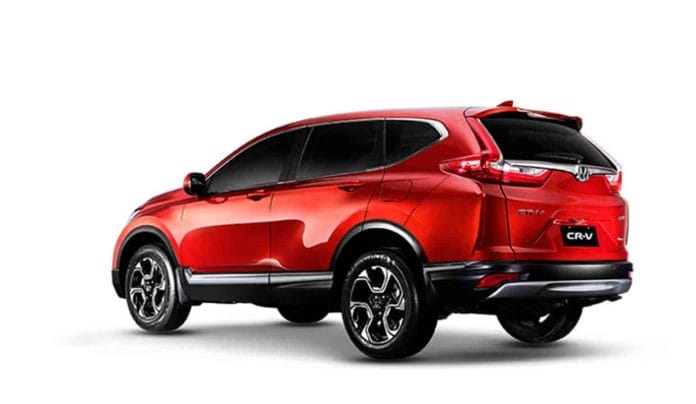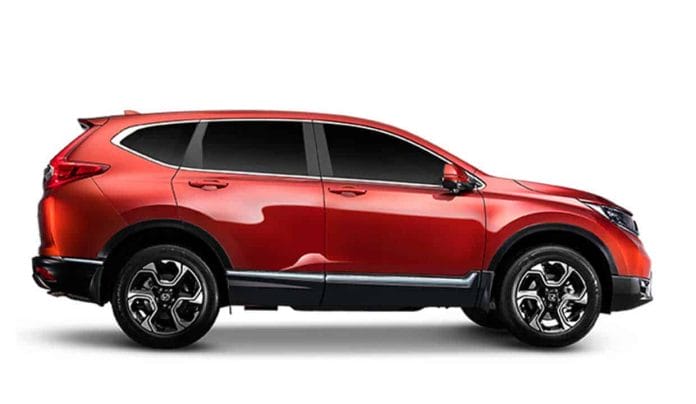When the seven-seat diesel-powered CR-V broke ground last year, it was hailed as a game-changer. Here was a new crossover that still counted its traditional rivals among its competitors, but included a new genre in its crosshairs: the pickup-based seven-seat midsize SUV’s like the Toyota Fortuner, Mitsubishi Montero Sport and Isuzu mu-X. We reviewed that diesel CR-V in the November issue, and gave it a glowing review. But what of the petrol-powered version?
While the flagship diesel CR-V had an initially seemingly high P2 million price tag, it was aimed at the similarly priced diesel seven-seat SUV’s. In contrast, the petrol CR-V 2.0 S, which comes as a five-seater only and is the entry-level model of the CR-V line, retails for a much lower P1.648 million. Still, that’s a substantial P300,000 more than a petrol Hyundai Tucson (even if the Hyundai is slightly smaller in just about every dimension).


More to the point, the CR-V 2.0 S costs a mere P23,000 less than its five-seat CR-V V Diesel sibling. Given that most petrol-to-diesel upgrades within a model line (i.e. Tucson, Innova) usually implies at least a P100,000 premium, the additional P23,000 seems like a surcharge you can’t refuse, considering the vastly better fuel economy and torque output of a diesel (300 versus 189 Nm for the two CR-V’s).
That said, modern gasoline engines still enjoy notable advantages over their diesel counterparts; namely, much less noise and vibration as well as none of that black smoke (although modern diesels have largely eliminated that scourge).
That plus the fact that Honda makes some of the best gasoline engines in the world. Their motors are always uncannily smooth, sound great, and give impressive fuel efficiency—thanks mostly to its pioneering variable valve timing technology. Oh, and for horsepower freaks, the petrol CR-V makes 154ps compared to the diesel version’s 120ps. So there.



Transferring torque to the front wheels is the job of a smooth-acting continuously variable transmission (CVT). It’s not as high-tech or sophisticated as the nine-speed automatic of its diesel brethren, but it gets the job done just as well. Plus it also has paddle shifters if you want more responsive shifting.
Honda is renowned for making some of the best-handling Japanese cars—and the CR-V lives up to this. The CR-V’s all-new chassis and wider front and rear track were designed to provide more agile and confident handling—and it certainly delivers. All CR-V’s, save for the flagship SX Diesel variant, are front-wheel-drive. To top off these improvements, the CR-V’s ground clearance was raised to 198mm, allowing it to traverse road objects and floods with ease. Tires are generously sized 235/60R-18 rubber.
The redesigned exterior revolves around Honda’s exterior concept of “Modern Functional Dynamic,” with the familial grille seen on other Hondas reflecting an upscale, futuristic look that is further complemented by Honda’s signature Full LED headlights.
The wide and muscular fenders, tailgate spoiler, and headlight-integrated LED Daytime Running Lights (DRL), gives the CR-V its dynamic stance. There’s not much to tweet about when viewing the car from the side, save that it’s a minimalist, gimmick-free look. It’s the rear and rear three-quarter view that, for me, seems the most compelling, thanks mostly to the dynamic 3D sculpting of the LED taillamps that sweep through three axes—up through the D-pillar, across the tailgate, and around the sides.
Inside, upscale features, supple black leather seating, and premium accents for ALL variants give the CR-V a more luxurious feel. A full-color TFT instrument cluster (again on all variants) welcomes the driver. The second row seats feature a 60:40-split that slides and reclines. There are air conditioning vents and two USB charging ports on the center console.
Keeping its passengers comfortable and entertained, all variants of the new CR-V are equipped with a 7-inch touchscreen 8-speaker Bluetooth/USB audio system. This system offers an intuitive operation for multimedia and hands-free telephone functionality, and Multi-View Reverse Camera Display with Dynamic Guidelines. There are front and rear aircon vents as well.
Other notable features include a smart entry system, Electronic Parking Brake (EPB) with Auto Brake Hold, Agile Handling Assist (AHA), Driver Attention Monitor, Driver and Passenger Airbags, Vehicle Stability Assist (VSA), Hill Start Assist (HSA), Anti-Lock Braking System (ABS) with Electronic Brake Distribution (EBD), Emergency Stop Signal (ESS), Multi-View Reverse Camera with Dynamic Guidelines, Low Tire Pressure Warning system; LaneWatch Camera, dual front airbags, side airbags, side curtain airbags, and Walk Away Auto Lock.
Honda seems to have all bases covered with four feature-laden variants of the new CR-V. While the seven-seat diesels may be the game-changers, the entry-level five-seat petrol model is the tried-and-true veteran that doesn’t seem to have any notable weakness or shortcoming.

